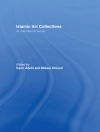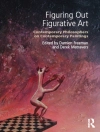In ‘How to See the British Museum in Four Visits, ‘ Blanchard Jerrold presents a meticulously crafted guide that transcends mere visitor information, offering an artistic and philosophical exploration of the British Museum’s treasures. Employing an engaging narrative style that weaves together vivid descriptions and historical contexts, Jerrold effectively encapsulates the vastness of the museum’s collection while encouraging a deeper reflection on the cultural significance of its artifacts. His innovative approach breaks down the overwhelming experience of museum visits into manageable, thematic segments, making it accessible to both first-time visitors and seasoned scholars alike. Blanchard Jerrold, an eminent English man of letters and a keen observer of urban life, drew inspiration from his extensive firsthand experiences of the museum’s exhibits. His background in literature and art criticism enabled him to adeptly articulate the emotional and intellectual dimensions of objects housed within the museum, revealing their narratives and the broader human experience they encompass. With a keen eye for detail, Jerrold’s insights also reflect the Victorian era’s burgeoning interest in museums as centers of education and culture. For anyone seeking to enrich their understanding of the British Museum, Jerrold’s work is an invaluable resource that not only serves as a practical guide but also as an invitation to contemplate the layers of history and culture represented within its walls. This book is an essential companion for both casual tourists and serious students of art and history, encouraging readers to immerse themselves in the museum’s offerings with newfound appreciation.
लेखक के बारे में
Blanchard Jerrold (1826–1884) was an eminent English journalist and author known for his vivid reportage and engaging narrative style. He was born in London to Douglas William Jerrold, a well-known playwright and the author of ‘Mrs. Caudle’s Curtain Lectures.’ Blanchard followed in his father’s literary footsteps, making significant contributions to Victorian literature and journalism. Jerrold is particularly noted for the travelogue ‘How to See the British Museum in Four Visits, ‘ a practical and insightful guide offering a structured approach to exploring the vast collections of one of the world’s most famous museums. His book, published in the mid-19th century, was aimed at both the casual visitor and the studious observer, evidencing his ability to cater to a broad readership. Jerrold’s narrative works combine descriptive detail with an accessible style, reflecting his background in journalism and his collaboration with renowned illustrator Gustave Doré on ‘London: A Pilgrimage, ‘ which remains a valuable resource for understanding the social context of the era. His contributions to Victorian literature continue to be appreciated for their historical relevance and their role in making cultural institutions more accessible to the public.












